Discovery of the Cell
- Books Name
- Class-8 Science Book
- Publication
- PathSet Publications
- Course
- CBSE Class 8
- Subject
- Science
Discovery of the Cell
- A Cell (from Latin cella, meaning "Small Room") is the basic Structural, Functional, and Biological unit of all known Living Organisms.
- A cell is the Smallest Unit of life that can replicate independently, and cells are often called the "Building Blocks of Life".
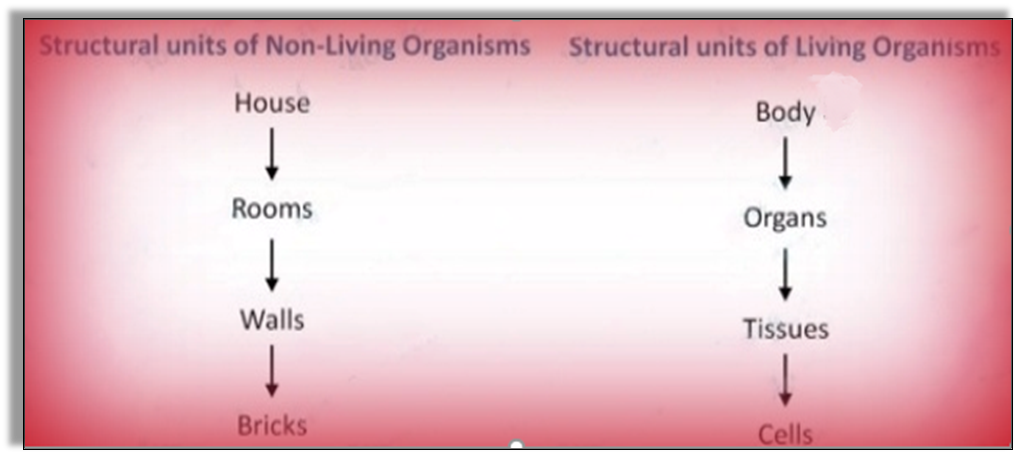
Cell
The cell can be described as the basic unit of life. Every organ, nerve, and bone in an organism is made up of groups of these cells. These cells decide how an organism looks, functions, and behaves. The word cell comes from the Latin word cella, which means a small room.
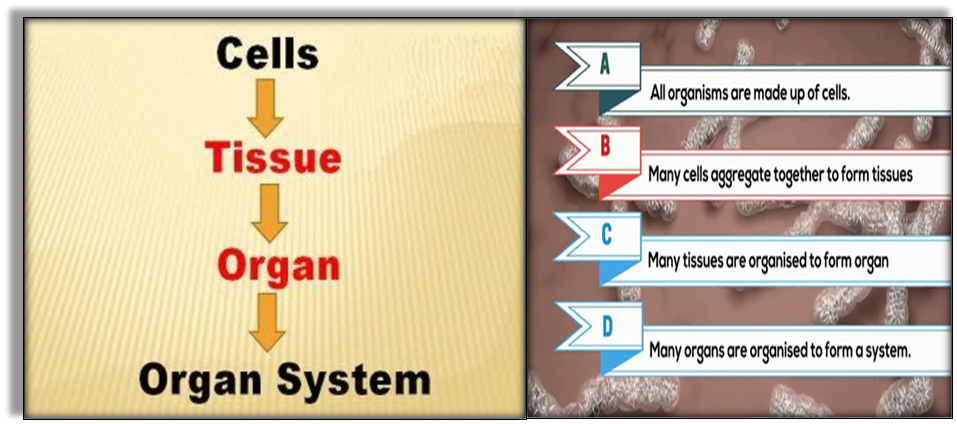
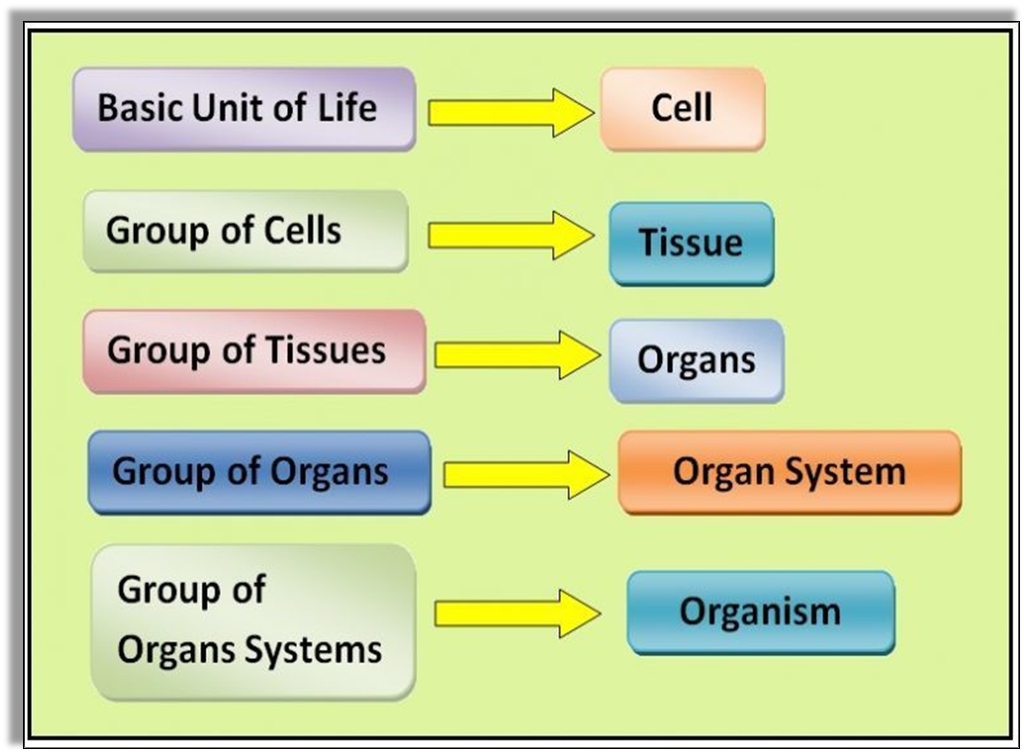
Who discovered Cells?
- It was discovered by Robert Hooke in 1665
- He discovered cells in cork (bark of an oak tree)
- He observed cork under a microscope
- He saw different compartments which were separated by walls
- He called them cells (as they looked like prison cells)
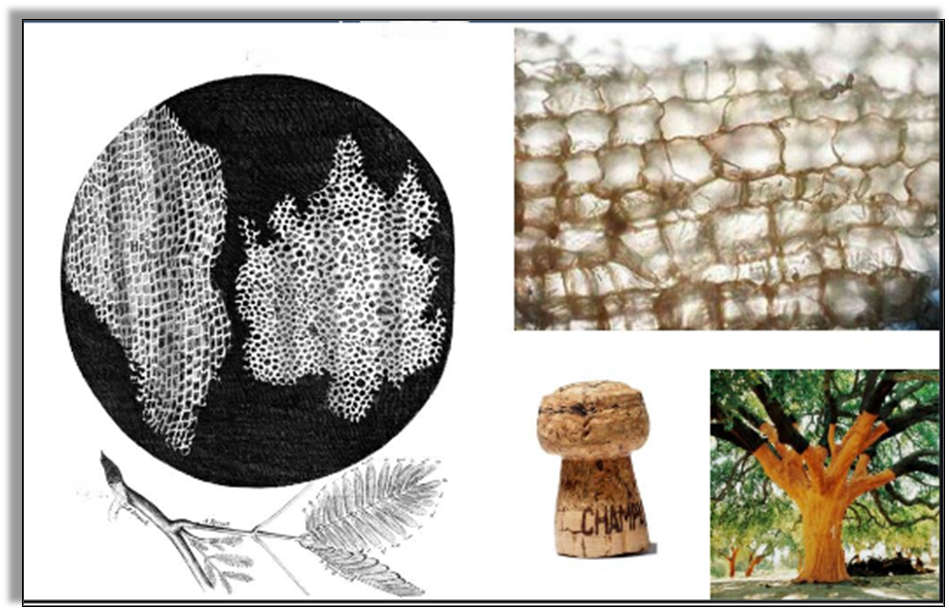
Discovery of the Cell:
The cell was discovered by Robert Hooke in 1665 after observing a piece of cork under a magnifying device.
→ Robert Hooke coined the term “cell”.
Hooke saw a honeycomb-like structure when he observed thin slices of cork under a microscope. He noticed that each box was separated from the other by a partition or a wall. He was the one to name each of these boxes as cells.
*Cork is a part of the bark of a tree.
Scientists could study cells of living organisms only when improved microscopes with high magnification were invented – 150 years after Hooke first observed the cells. In the 1830s, two German scientists called Matthias Schleiden and Theodor Schwann proposed the Cell Theory which stated:
- All living organisms are made of cells.
- Cells are basic structural or functional units of living organisms.
- All cells are born out of pre-existing cells through cell division.
The Cell
- Books Name
- Class-8 Science Book
- Publication
- PathSet Publications
- Course
- CBSE Class 8
- Subject
- Science
The Cell
While cells are often referred to as 'bricks' making up a building, cells are complex living structures that can have a variety of shapes, sizes, and functions.
Did you know?
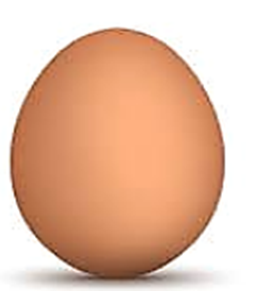
that can be seen by the naked eye.
What are cells?
The smallest living part of an organism is a cell. All plants, animals, and human beings are made of small units called cells.
Example
Our body has trillions of cells. Different cells in our body perform different functions. Hence we can say that Cell is the smallest unit of life that has a definite structure and perform different functions.
Why is a cell called a Basic Structural unit?
- It is because they are the basic unit of life
- All plants and animals are made up of cells
- Just as a house is made of different rooms, different rooms are made of walls and walls are made up of different bricks (non-living)
- Similarly, our body is made up of different organs and different organs are made up of tissues which are made of different cells (Living organisms)
- Hence, a cell is a basic structural unit of a living organism.
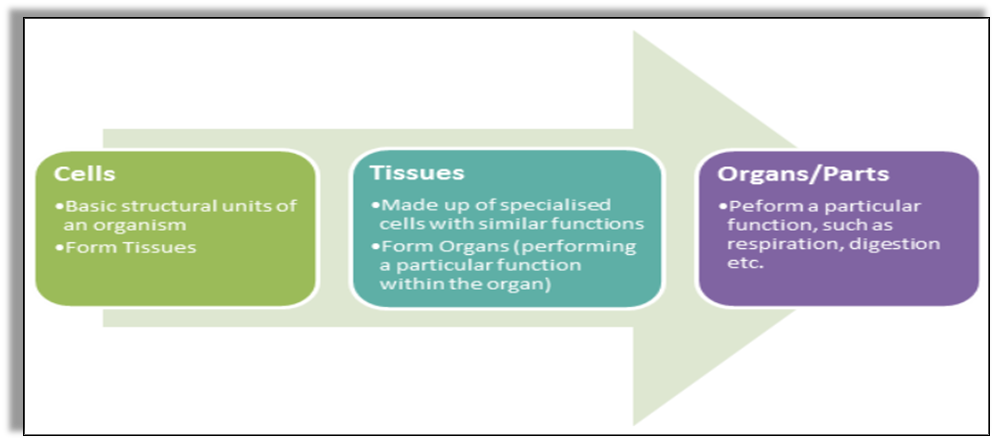
Features of cell:▪ A cell is the smallest structural, functional and biological unit of life in all living organisms.
▪ All organisms are made of cells and cell products.
▪ Most of the cells are so small in size that they cannot be seen by the naked eye.
▪ Most plant and animal cells are visible only under a microscope, with dimensions between 1 and 100 micrometers.
▪ The smallest cell is that of a PPLO (a bacterium).
▪ The egg of an ostrich is the largest cell on earth.
▪ The size and shape of a cell are different for different organisms.
Organisms are classified as –
Unicellular – Consisting of a single cell. Example – bacteria.
Multicellular – Consisting of many cells that form complex structures. Example – plants, and animals.
▪ A cell can replicate independently i.e., it can divide itself into multiple new cells. This process is called cell division.
▪ Cells are made up of functional membrane-bound units called organelles.
▪ Cells of all organisms have the same kind of organelles.
▪ Amoeba is capable of changing shape with the help of pseudopodia.
▪ WBCs in humans also show the same feature.
Organisms show Variety in Cell Number, Shape and Size
- Books Name
- Class-8 Science Book
- Publication
- PathSet Publications
- Course
- CBSE Class 8
- Subject
- Science
Organisms Show Variety in Cell Number, Shape, and Size
To study cells, scientists use microscopes to magnify them. They often use stains (dyes) to color parts of the cell and study them in detail.
Number of Cells

There are billions and trillions of cells in a tall tree or a large animal. A human body also has trillions of cells that have different shapes, sizes and functions.
Organisms can be of two types:
Multicellular Organisms
Unicellular Organisms
Some organisms have billions and trillions of cells in a living organism Like Human Beings, dogs, Cat. They are called multi-cellular organisms.
However, there are some organisms that have only one cell Like Bacteria. They are called unicellular or single-celled organisms.
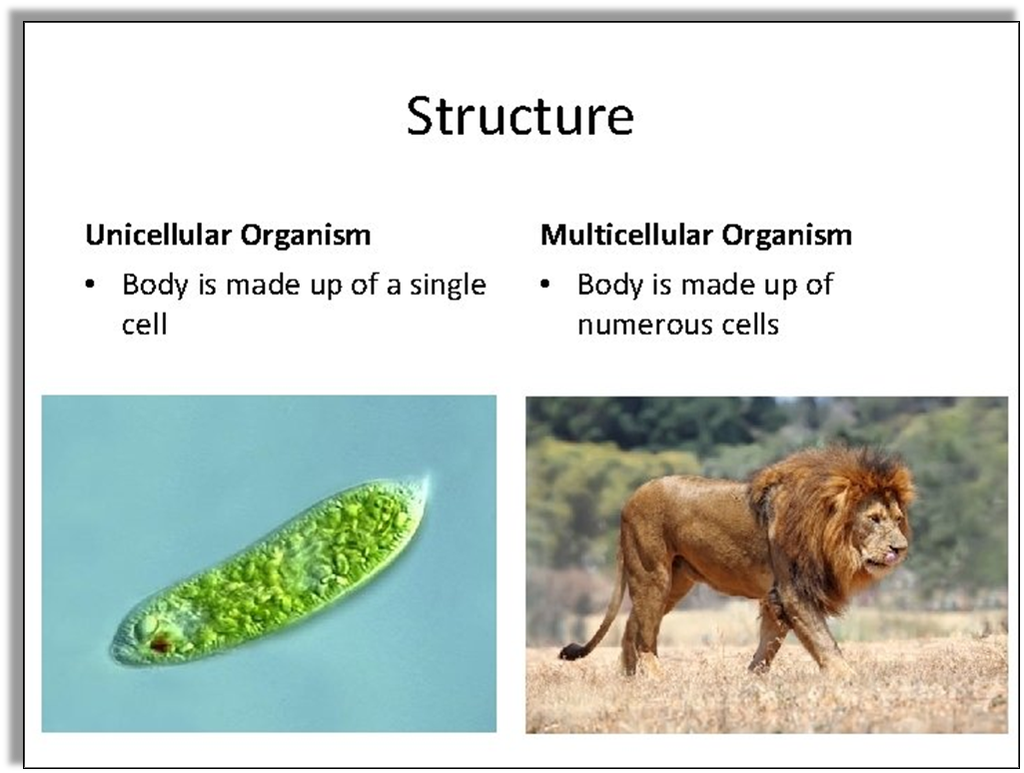
Difference between Multicellular and Unicellular Organisms
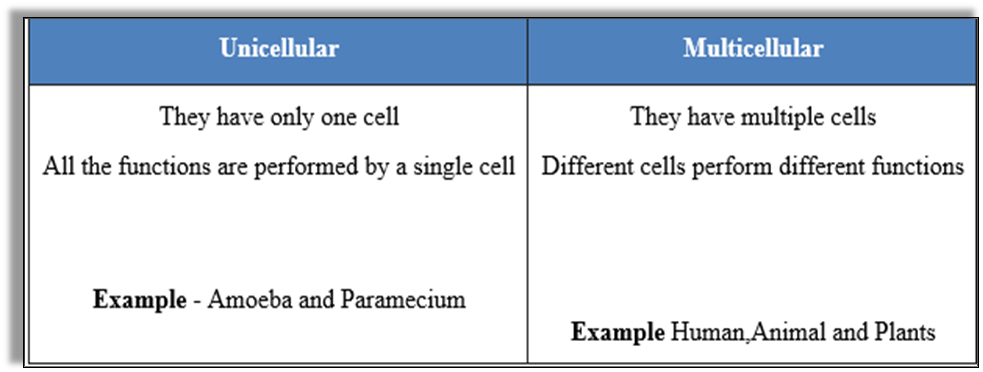
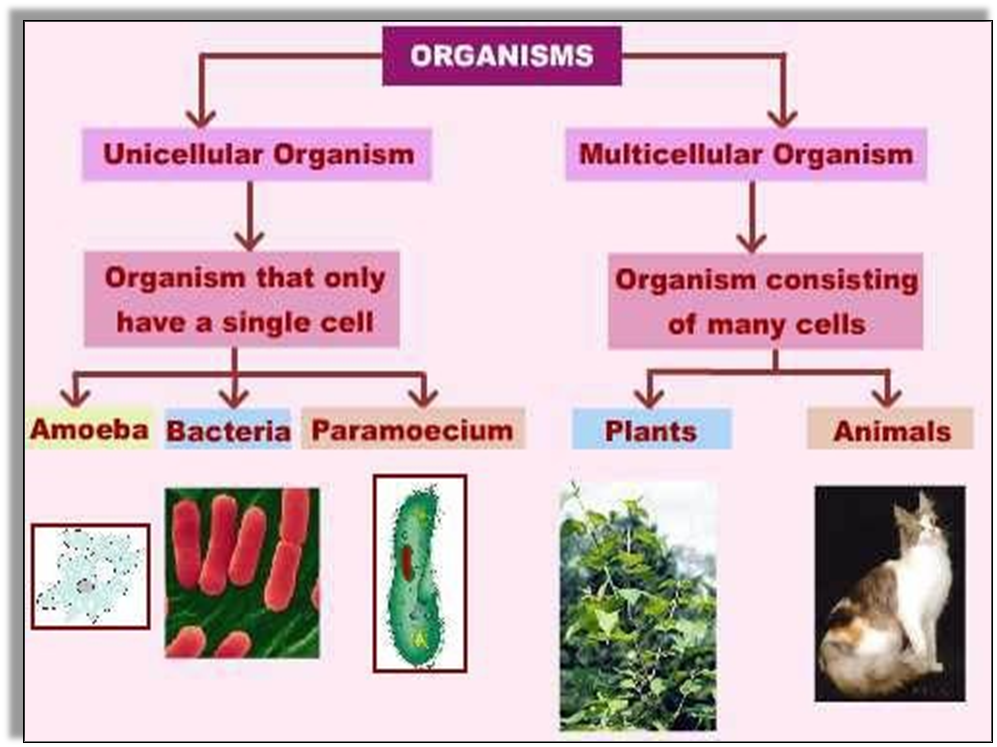
Multicellular Organisms are made up of more than one cell.
For Example, Mango Tree and Frog.
Unicellular Organisms are made up of a single cell.
For Example, Amoeba and Paramecium.
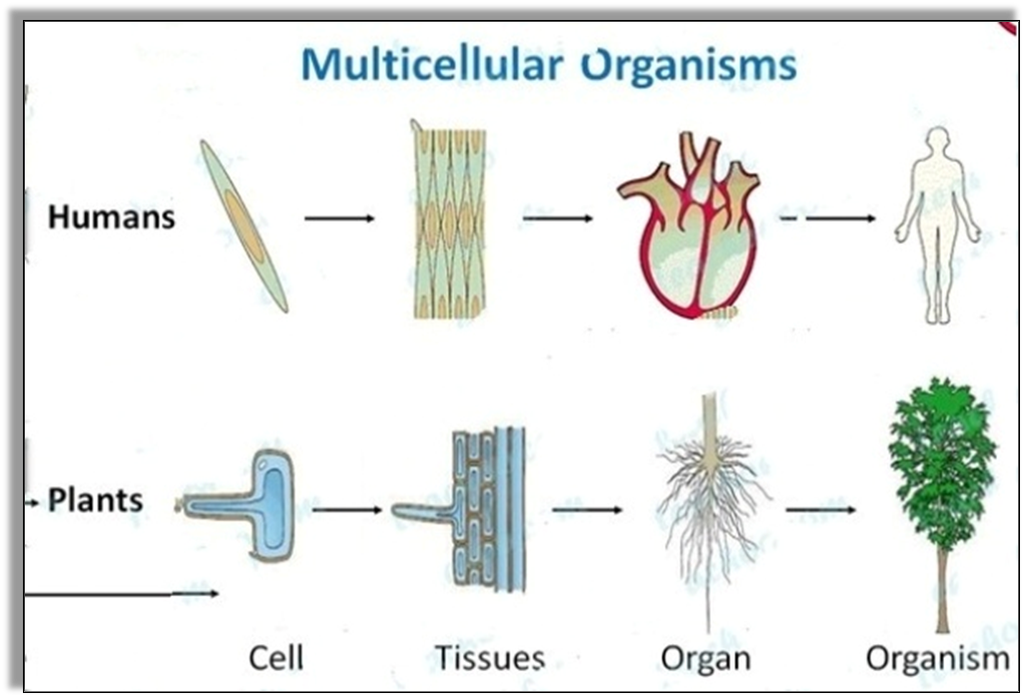
Did you know?
Multicellular organisms with billions of cells also start their life as a single cell. The fertilized egg (which is a single cell) multiplies to form more cells as the organism develops. Single-celled organisms also perform all the necessary life functions like multicellular organisms, including:-
- ingestion and digestion of food
- respiration
- excretion
- reproduction
- growth
The only difference is that while a single cell performs all the functions in unicellular organisms, multicellular organisms have a specialized group of cells to perform different functions. The specialized cells form tissues, which in turn form organs.
Shape of Cells
Amoeba, which is a single-celled organism, does not have a definite shape. Its shape keeps changing as it moves or feeds, protruding parts of its body to form 'pseudo' (meaning 'false') 'podia' (meaning 'feet'). These projects are known as pseudopodia. Humans have millions of cells, such as white blood cells (found in the blood), cells that make up muscles, and cells that form nerves. Their shapes vary according to the functions they perform.
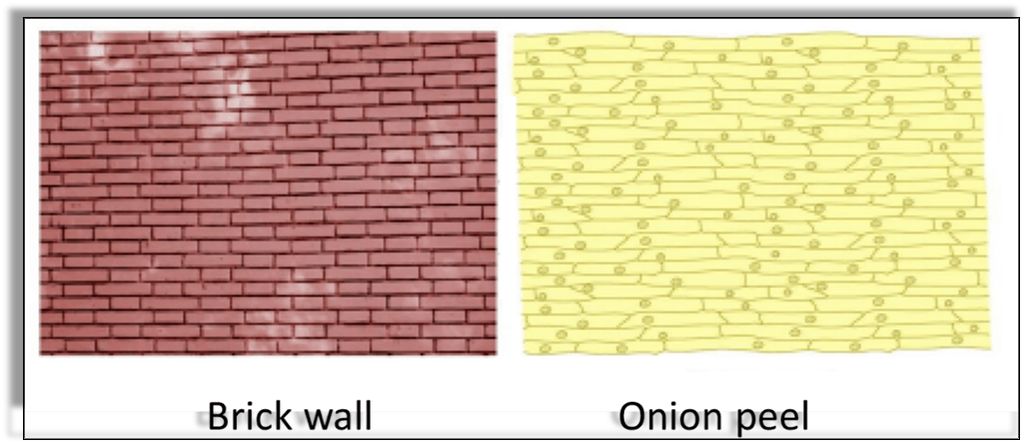
Most cells are round, spherical, or elongated. Some are spindle-shaped which are long and pointed at both ends. Nerve cells or neurons are quite long and are branched out to receive and transfer messages.
Some cells such as that in Amoeba have no definite shape.
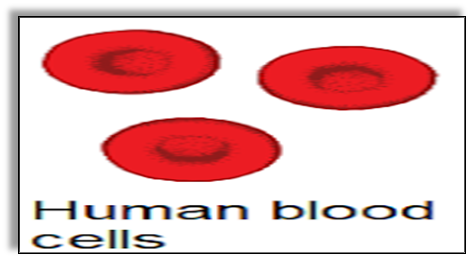
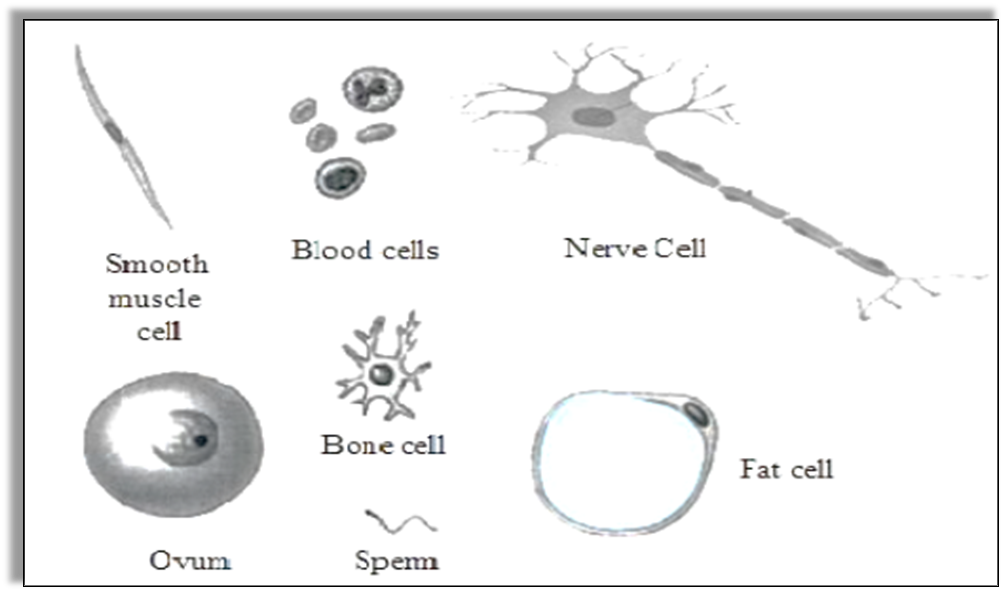
Different shapes of human cells
- Shapes of the cells are maintained by a covering called Cell Membrane or Plasma Membrane.
- Bacterial cells and plant cells have an additional rigid covering called a Cell Wall.
Size of Cells
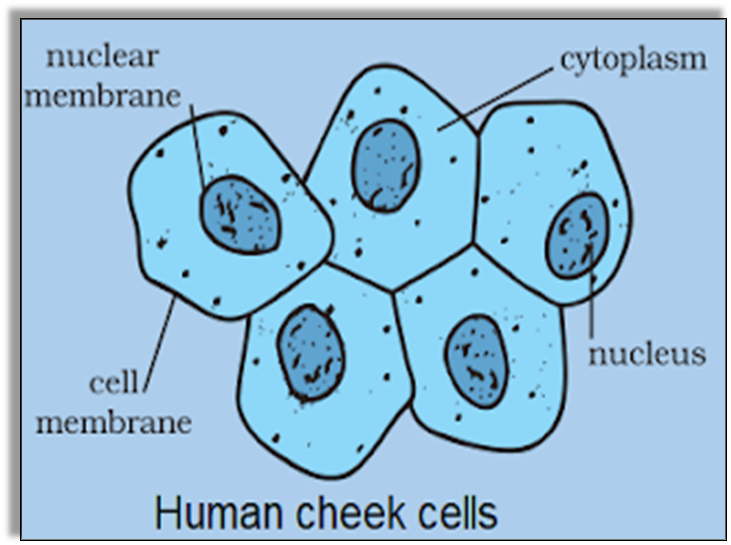
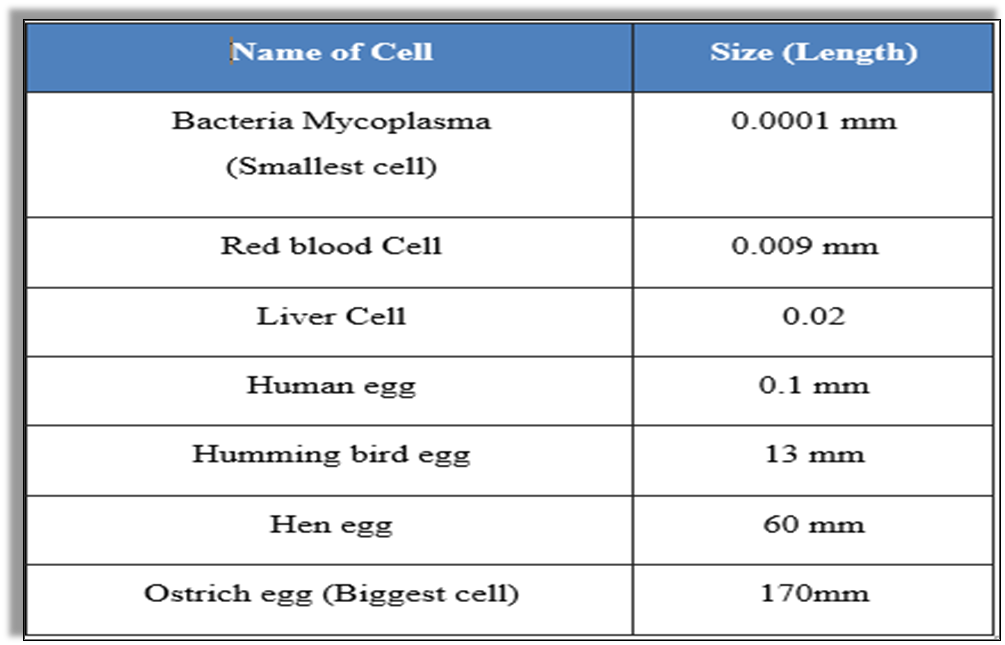
micrometer = 1/1000 mm
1 mm = 1/1000 m
- The smallest cell is 0.1 to 0.5 micrometer in bacteria.
- The largest cell is of size 170 mm x 130 mm, which is the egg of an ostrich.
- The size of a cell has no relation with the size of an organism.
What is the size of the cell?
- Cells are usually very small (microscopic in nature) which means they cannot be seen through the naked eyes
- The size of the cell does not relate to the size of the body
- It is related to the function it performs
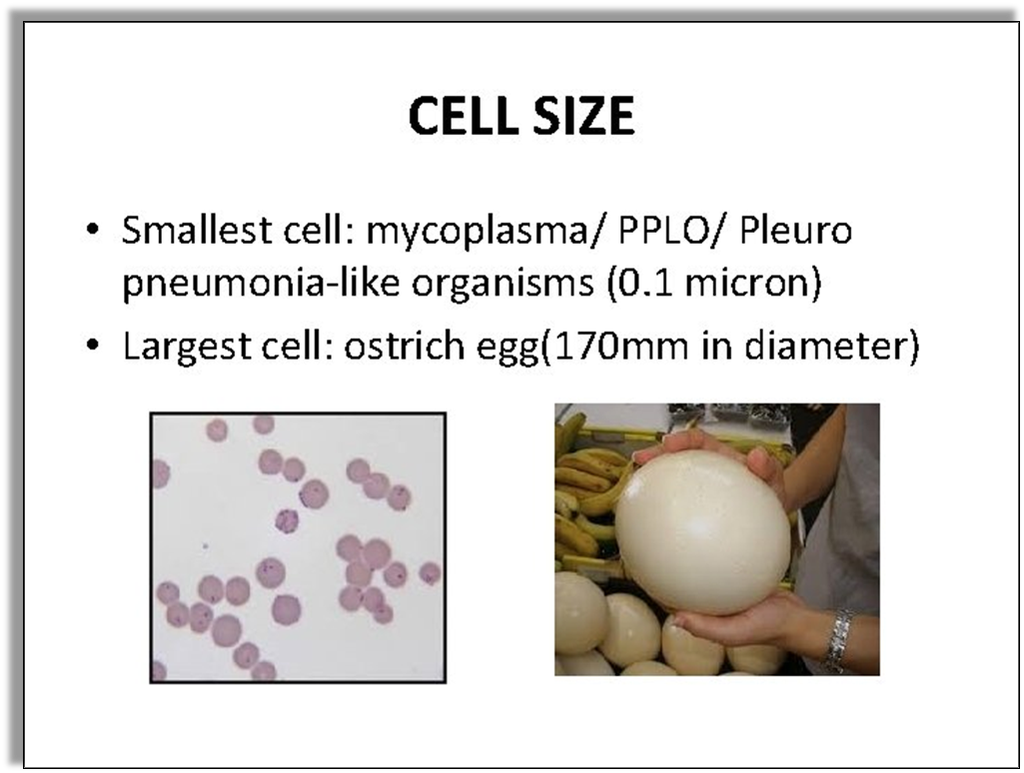
The size of the cells may vary from a millionth of a meter (known as a micron) to a few centimeters but most of them cannot be seen with the naked eye. We need microscopes to see these microscopic cells.

Do larger organisms have Bigger cells?
- No, the size of the cell has no relation with the size of the organism
- It is not necessary that cells in elephants will be bigger than cells in rat
- It is not necessary that the size of cells of a large animal (such as an elephant) will be larger than cells of a small animal (such as a rat).
The size of the cell depends on the function it performs.
For example, the nerve cells of a rat and the nerve cells of an elephant perform the same functions and hence, are of the same size.
Cell Structure and Function
- Books Name
- Class-8 Science Book
- Publication
- PathSet Publications
- Course
- CBSE Class 8
- Subject
- Science
Cell Structure and Function
Some of the cells have a simple structure and some are complex, but all cells essentially contain three basic parts. They are:
- Cell envelop that contains: Cell membrane: It protects cell content and controls exit and entry of materials from the cell.
- Cell wall: It helps plants to withstand changes in the outside environment without bursting
- Nucleus: It is the control center of a cell.
- It contains chromosomes made up of DNA and protein.
- It contains functional segments of DNA called genes, which are responsible for the transmission of hereditary characters.
- The nucleolus is seen inside the nucleus.
- The nuclear membrane has pores for the exchange of material with the cytoplasm.
- Cytoplasm: It is the fluid content present inside the plasma membrane.
- Protoplasm + Cell organelles = Cytoplasm
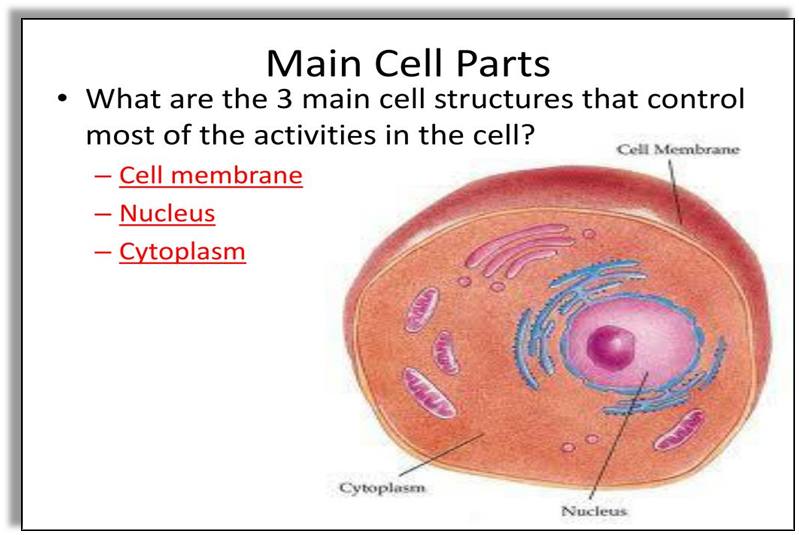
- In multicellular organisms, each organ system is made up of several organs.
- Organs are further made up of tissues.
- Tissues are groups of similar cells performing a specific function.
- The number of cells Organisms made up of only a single cell are called unicellular organisms. For example Amoeba and Paramecium
- Single-cell in unicellular organisms performs all the basic functions such as digestion, respiration, and excretion.
- Organisms made up of more than one cell are called multicellular organisms. For example Humans, cows, etc.
- In multicellular organisms, the cells show division of labor as a particular set of cells is involved in performing a specific body function.
- In a unicellular organism, a single cell performs all the basic functions of life but in multicellular organisms, there is a division of labor.
Parts of the Cell
- Books Name
- Class-8 Science Book
- Publication
- PathSet Publications
- Course
- CBSE Class 8
- Subject
- Science
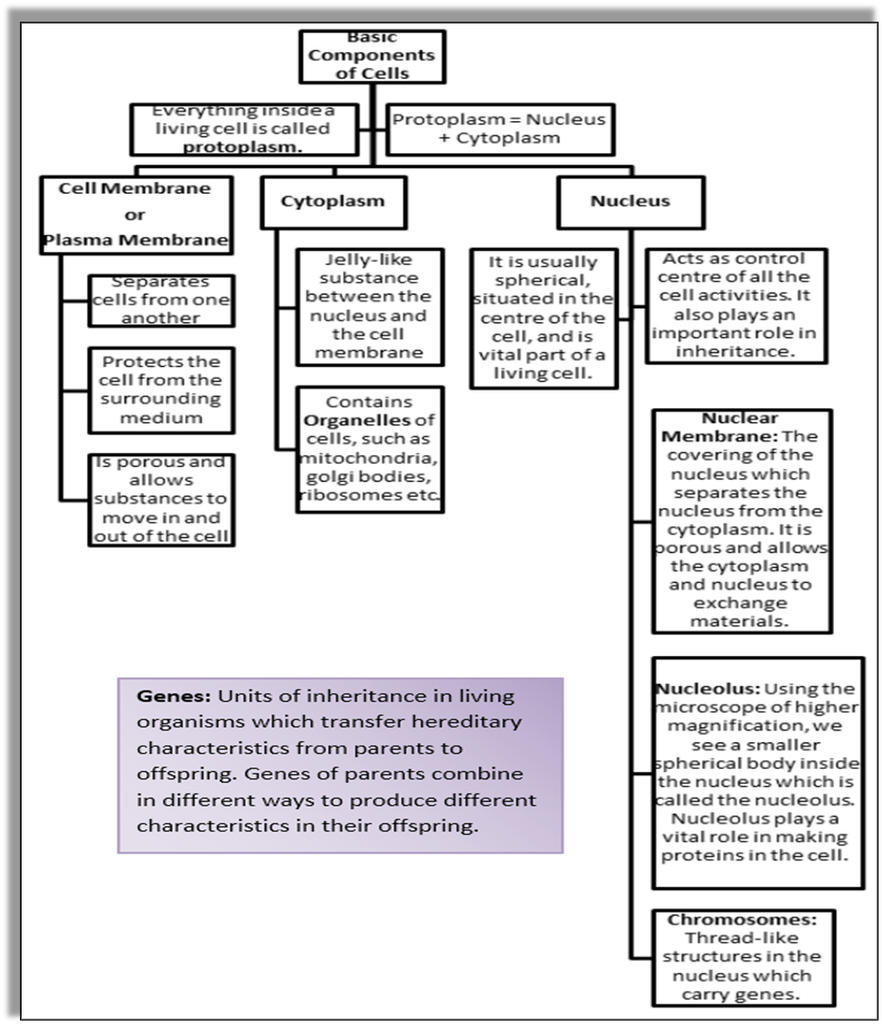
PLANT CELL Structure
To observe the basic components of a Plant cell:
- Peel an onion.
- Place a small piece of the dry and thin onion peel in a drop of water on a glass slide.
- Put a drop of methylene blue solution on this thin layer and place a coverslip on it (while ensuring that no air bubbles get trapped in the coverslip).
- Place the slide under the microscope
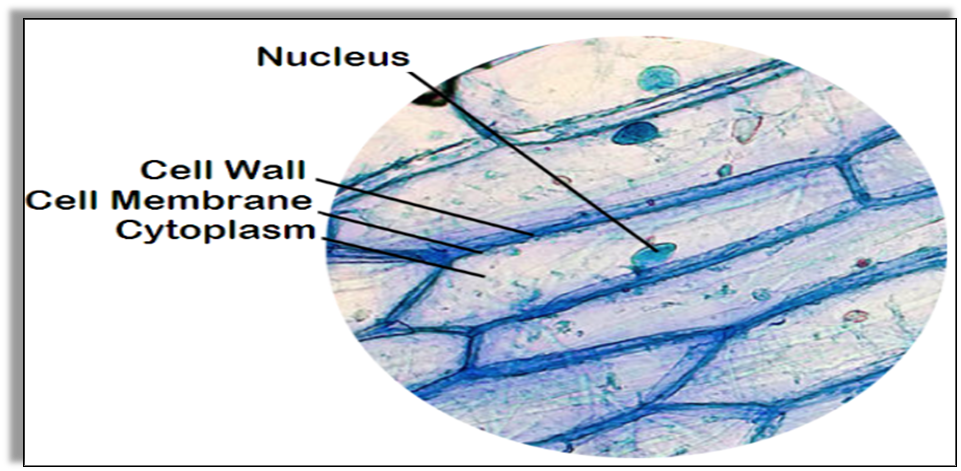
You will see:
- The boundary of the onion cell is a cell membrane, which is covered by another thick covering called the cell wall.
- The dense round body in the center of the cell is called the nucleus.
- The jelly-like substance between the cell membrane and the nucleus is called the cytoplasm.
Animal Cell
What is an Animal cell?
As the name implies, an animal cell is a type of cell that is seen specifically in animal tissues. It is characterized by the absence of a cell wall, with cell organelles enclosed within the cell membrane.
“An animal cell is a type of eukaryotic cell that lacks a cell wall and has a true, membrane-bound nucleus along with other cellular organelles.”
Animal Cell Types
There are numerous types of animal cells, each designed to serve specific functions. The most common types of animal cells are:
Skin Cells
Melanocytes, keratinocytes, Merkel cells and Langerhans cells
Muscle Cells
Myocyte, Myosatellite cells, Tendon cells, Cardiac muscle cells
Blood Cells
Leukocytes, erythrocytes, platelet
Nerve Cells
Schwann cell, glial cells etc
Fat Cells
An animal cell is usually irregular and round in shape. This is primarily due to the absence of the cell wall, which is a characteristic feature of plant cells. Furthermore, animal cells do not have plastids as animals are not autotrophs.
To observe the basic components of an Animal cell:
- Scrape the inside of your cheek lightly with a clean toothpick.
- Place it in a drop of water on a glass slide.
- Add a drop of an iodine solution or methylene blue solution and place a coverslip on it.
- Place the slide under the microscope.
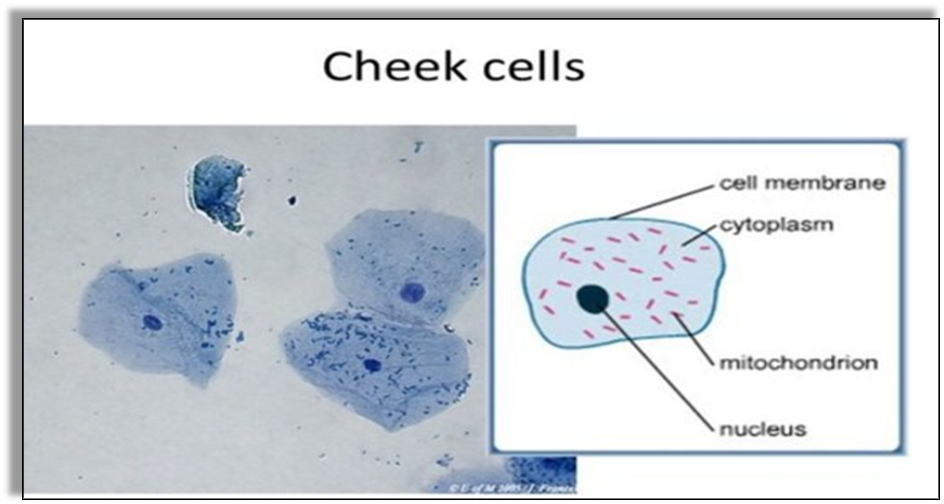
You will see:
- The cell membrane (Cell wall is absent in animal cells),
- Nucleus, and
- Cytoplasm.
- There are some other organelles (or components of cells) too. These include mitochondria, ribosomes, and Golgi bodies.
Animal Cell Structure
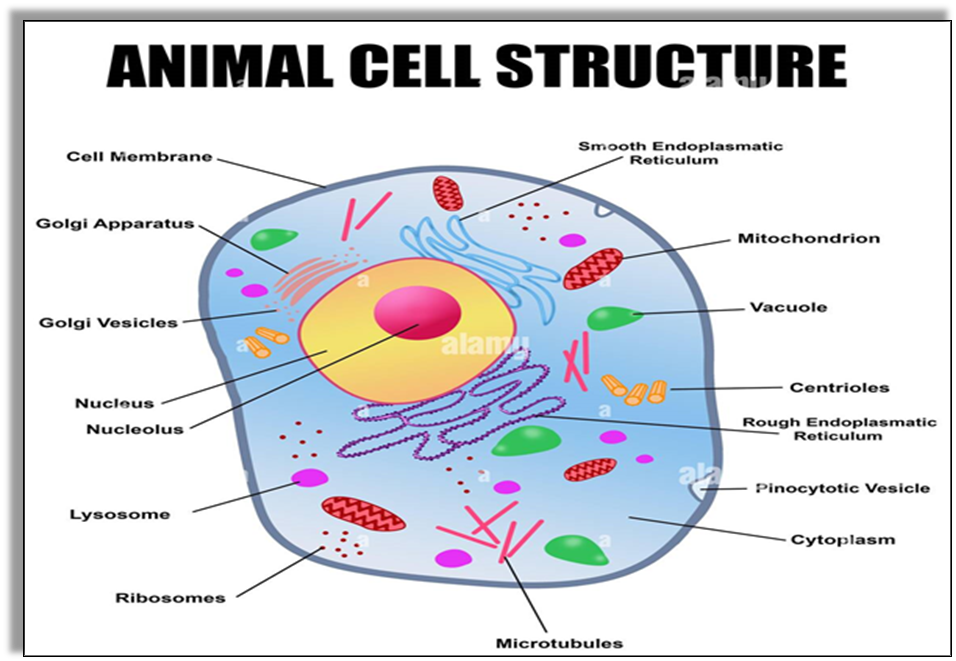
Three–Dimensional View of Animal Cell
Animal Cell Structure
Animal cells are generally smaller than plant cells. Another defining characteristic is its irregular shape. This is due to the absence of a cell wall. But animal cells share other cellular organelles with plant cells as both have evolved from eukaryotic cells.
Animal Cell comprises the following Cell Organelles:
Cell Membrane
A thin semipermeable membrane layer of protein and fats surrounds the cell. Its primary role is to protect the cell from its surrounding. Also, it controls the entry and exit of nutrients and other microscopic entities into the cell.
Nuclear Membrane
It is a double-membrane structure that surrounds the nucleus. It is also referred to as the nuclear envelope.
Nucleus
It is an organelle that contains several other sub-organelles such as nucleolus, nucleosomes and chromatins. It also contains DNA and other genetic materials.
Centrosome
It is a small organelle found near to the nucleus which has a thick center with radiating tubules. The centrosomes are where microtubules are produced.
Lysosome (Cell Vesicles)
They are round organelles surrounded by a membrane and comprising digestive enzymes which help in digestion, excretion and in the cell renewal process.
Cytoplasm
A jelly-like material that contains all the cell organelles, enclosed within the cell membrane. The substance found within the cell nucleus, contained by the nuclear membrane is called the nucleoplasm.
Golgi Apparatus
A flat, smooth layered, sac-like organelle that is located near the nucleus and involved in manufacturing, storing, packing and transporting the particles throughout the cell.
Mitochondrion
They are spherical or rod-shaped organelles with a double membrane. They are the powerhouse of a cell as they play an important role in releasing energy.
Ribosome
They are small organelles made up of RNA-rich cytoplasmic granules, and they are the sites of protein synthesis.
Endoplasmic Reticulum (ER)
This cellular organelle is composed of a thin, winding network of membranous sacs originating from the nucleus.
Vacuole
A membrane-bound organelle present inside a cell is involved in maintaining shape and storing water, food, wastes, etc.
Nucleopore
They are tiny holes present in the nuclear membrane which are involved in the movement of nucleic acids and proteins within the cell.
Detailed Description of Organelles found in both Plant and Animal Cells are:-
1. Endoplasmic Reticulum
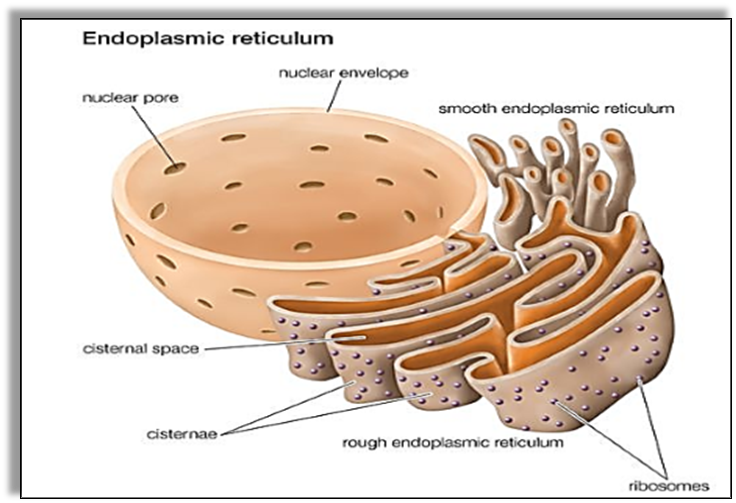
Endoplasmic Reticulum (ER) is a network of canals made up of membranes that encloses a fluid-filled lumen. It is of two types:
- Rough Endoplasmic Reticulum (RER): It is lined with ribosomes and hence, looks rough.
- The function of RER: It plays a key role in the synthesis of protein as ribosomes are attached to it.
- Smooth Endoplasmic Reticulum (SER): It does not have any ribosomes and hence, looks smooth.
- The function of SER: It plays a key role in the synthesis of lipids.
2. Ribosomes
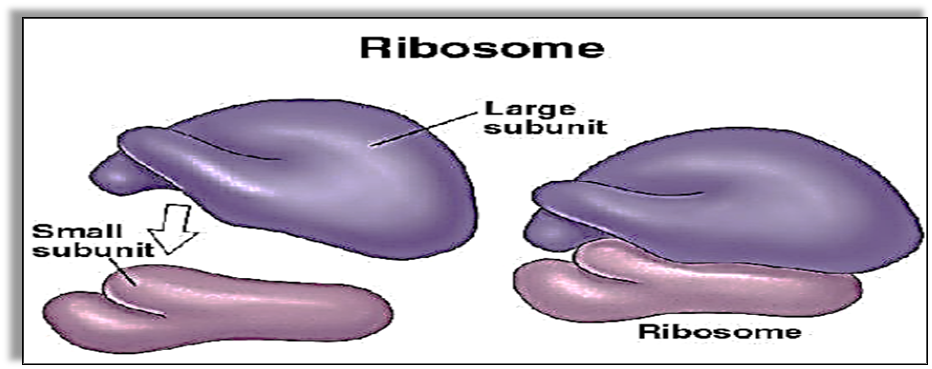
Ribosomes are spherical bodies made up of RNA (ribonucleic acid) and protein enzymes. They do not have membranes and are present separately in the cytoplasm.
The function of ribosomes: Ribosomes are the sites where protein synthesis takes place.
3. Golgi Bodies
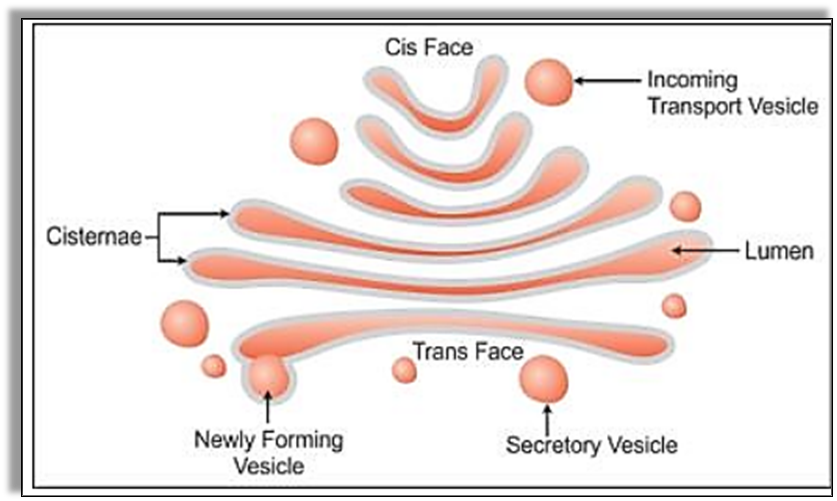
Smooth, flattened sac-like structures called Cisternae stack together in parallel rows to form Golgi bodies. Golgi Cis face receives protein from the Endoplasmic reticulum and modifies, packages and stores it. It also dispatches proteins in vesicles to various destinations.
The function of Golgi bodies: The Golgi apparatus is responsible for the secretion of enzymes, hormones and proteins.
4. Mitochondria
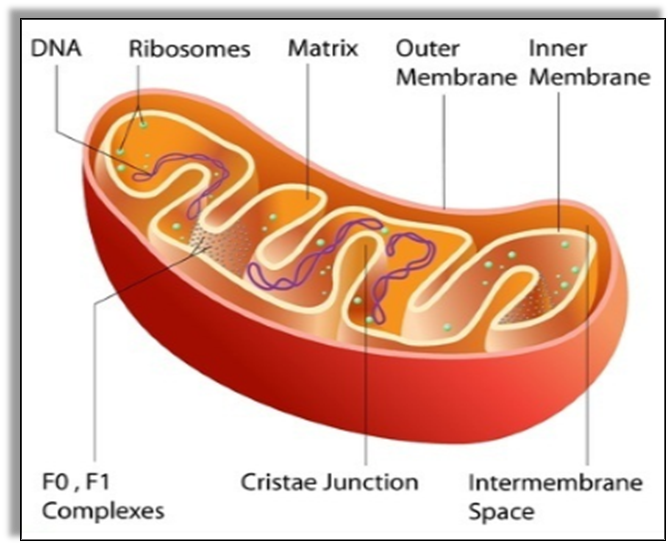
Mitochondria are rod-shaped organelles with a double membrane. The outer membrane is smooth while the inner membrane folds over many times to form cristae. Cristae increase the surface area of the inner membrane by several times. Matrix is the fluid inside the mitochondria.
The function of Mitochondria: Mitochondria act as energy production sites and are hence, known as the Powerhouses of the Cell.
Glucose + Oxygen → Carbon Dioxide + Water + Energy (ATP)
5. Lysosome
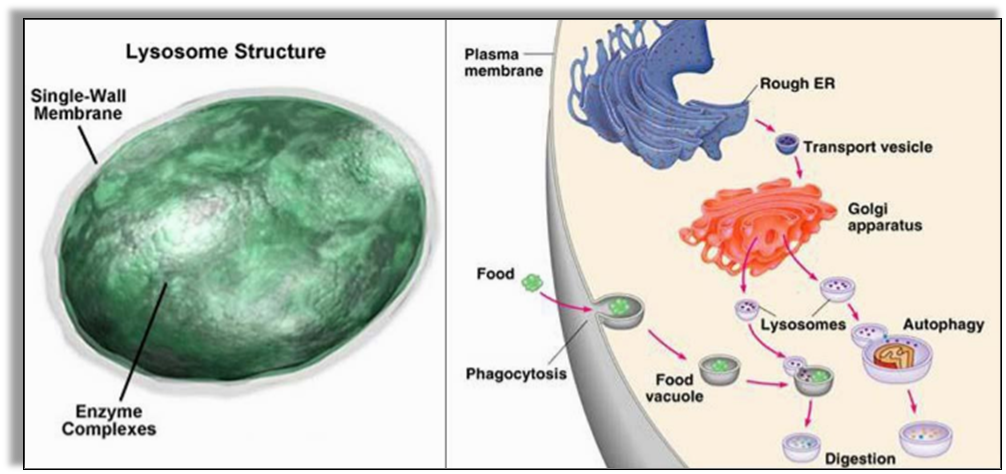
Lysosomes are sac-like structures surrounded by single-layered membranes. They contain powerful digestive enzymes that can break down all organic material. It acts as a mini digestive system within the cell.
The function of Lysosomes: Lysosomes digest damaged cells and a variety of extra- and intra-cellular material. Since they remove cell organelles that are worn out or are not functioning properly and may even digest the entire cells (that are damaged or dead), they are also known as Suicidal Bags.
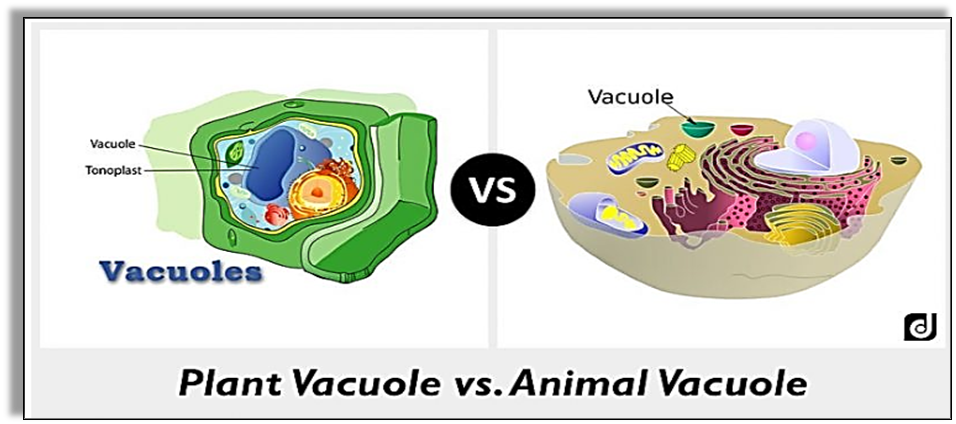
6. Vacuoles
Vacuoles are organelles enclosed by a membrane and filled with fluid. Plant cells usually have a large vacuole filled with a liquid called ‘cell sap’. Cell Sap contains dissolved sugar and salts. Animal cells may or may not have vacuoles. If they do have vacuoles, they are much smaller than the ones found in plant cells.
The function of Vacuoles in Plant Cells: Vacuoles in plant cells keep the cells firm or turgid. They store various substances (including waste products of the cell).
The function of Vacuoles in Animal Cells: Vacuoles in animal cells store food, water, sugar, minerals and waste products of the cell. In Amoeba, vacuoles that contain food particles are also referred to as food vacuoles.
7. Plastids
Plastids are also typed of organelles that are found only in Plant Cells.
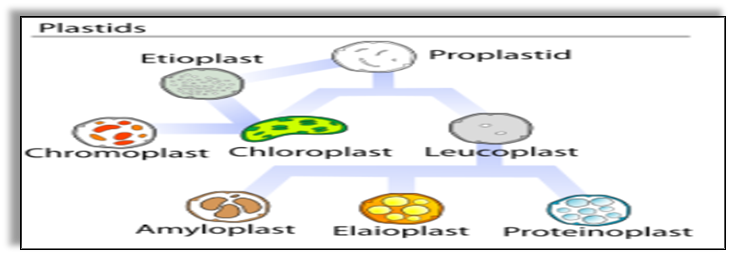
With a double-layered membrane, these organelles are found in the cytoplasm of the cells. They are of two types (depending on the color of the pigment they contain);
Leucoplasts: These colorless organelles store starch or other plant nutrients.
For Example, Starch is stored in potato cells. Leucoplast is of different types :
Amyloplast: stores starch
Elaioplast: stores fat
Proteinoplast/ Aleuroplast: stores protein
Chromoplasts: These contain different-colored pigments. The most important type of chromoplasts is chloroplast which contains green-colored pigments called Chlorophyll.
The function of Chloroplast: Chloroplasts are the sites where photosynthesis takes place. Here, carbon dioxide and water combine in the presence of energy from the sunlight to produce food. Hence, chloroplasts help in the synthesis of food by green plants.
CO2 + H2O → Glucose + Oxygen
(in the presence of chlorophyll + sunlight)
How do molecules move in and out of the cell?
Molecules use two main methods of passive transport to move in or out of the cell:
Osmosis and Diffusion
Osmosis
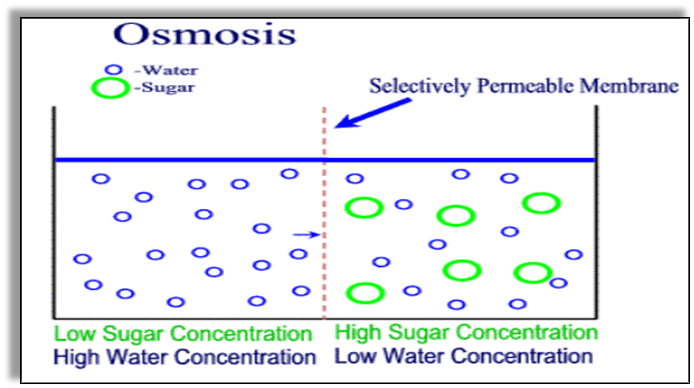
When the solvent moves from the area of the dilute solution to the area of concentrated solution through a semipermeable membrane in order to equalize the concentration level of both the solutions, the process is known as ‘Osmosis’.
For Example, Roots absorb water from the soil through osmosis.
Diffusion
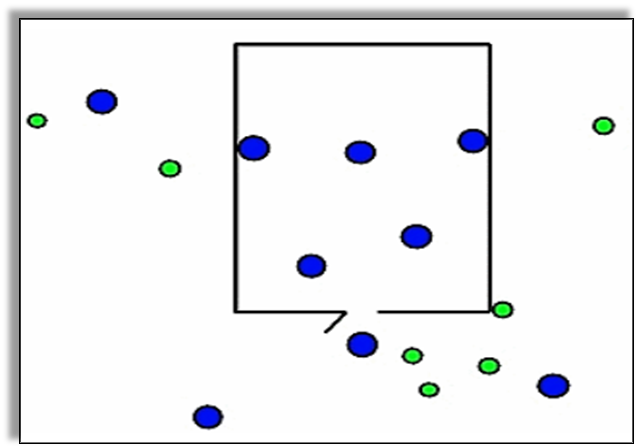
When the particles of any material move from a region of higher concentration to that of lower concentration until the equilibrium are reached, the process is known as ‘Diffusion’.
For Example: When you spray perfume, its fragrance spreads in the air through diffusion.
Differences between Osmosis and Diffusion
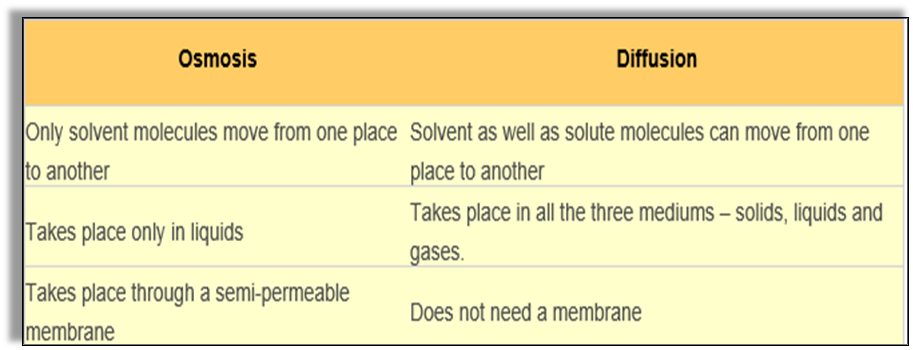
Why do Plant cells have Cell walls?
A cell wall is the outer thick layer in plant cells that protect the cell membrane. Since plants cannot move from their place, this cell wall serves to protect their cells from the possible damage by temperature variations, high wind speed, atmospheric moisture etc.
Types of Cells:
Cells are mainly divided into prokaryotic and eukaryotic cells.
Prokaryotic cells are simple cells without a nucleus. Example - bacteria. A prokaryotic cell has a simple structure and is made of -
Cell envelope - It consists of the cell wall, cell membrane and sometimes a capsule.
The flagella are a string-like structure that helps the cell to move and communicate with other cells.
The cytoplasmic region in the center contains the nucleoid, cytoplasm, and ribosomes.
Eukaryotic cells
Eukaryotic cells are larger in size and complex in structure. They are found in plants, animals, fungi, and protozoa etc. They have different organelles in which specific metabolic activities are carried out. The main difference is the presence of the nucleus is an organelle that contains the cell's DNA.
Prokaryote
Bacterial cells and cells of blue-green algae do not have well-defined nuclei (plural of nucleus) like those of multi-cellular organisms. The cells of such organisms have nuclear materials without the nuclear membrane. Such cells are called prokaryotic cells where 'pro' stands for 'primitive' and 'karyon' stands for 'nucleus'. Organisms with prokaryotic cells are known as prokaryotes.
Eukaryotes
Plant and animal cells with well-organized nuclei with nuclear membranes are called eukaryotic cells. 'Eu' stands for 'true' while 'karyon' stands for 'nucleus'. Organisms with eukaryotic cells are known as Eukaryotes. Differences between Prokaryotic and Eukaryotic Cells
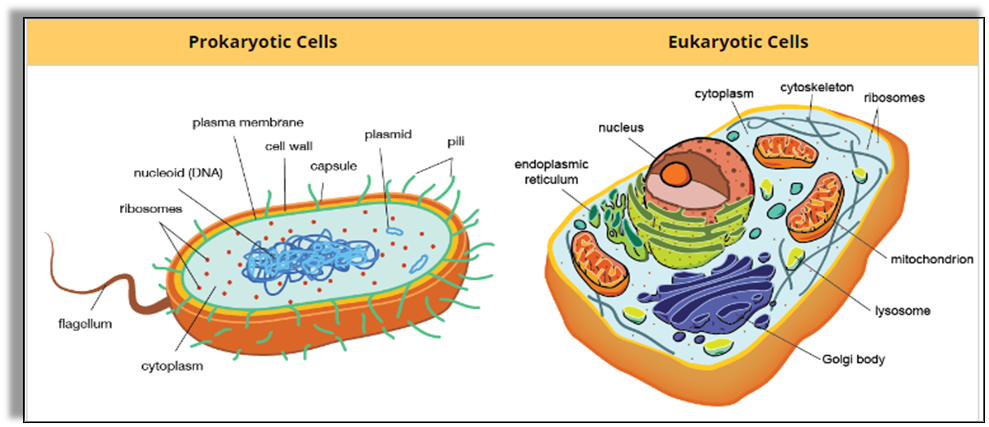
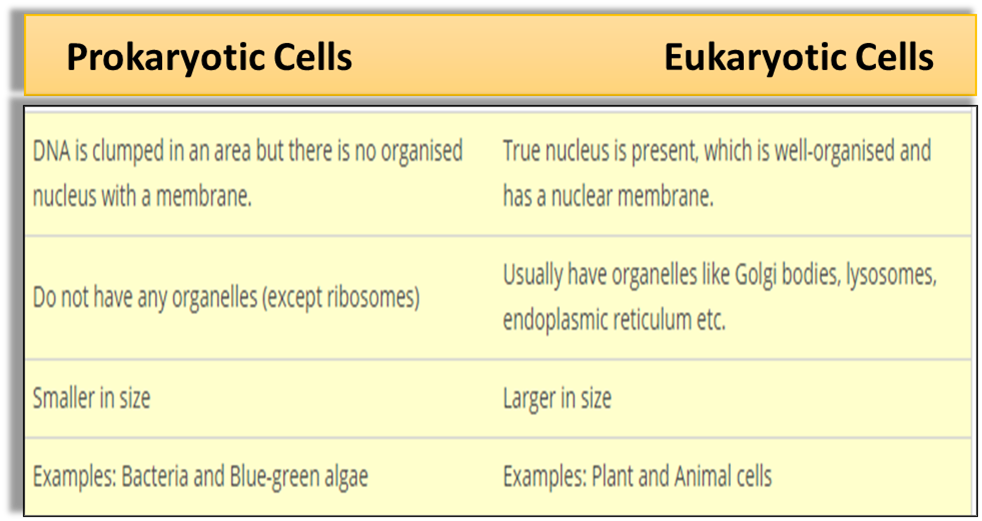
Comparison of Plants and Animals Cells
- Books Name
- Class-8 Science Book
- Publication
- PathSet Publications
- Course
- CBSE Class 8
- Subject
- Science
Comparison of Plant and Animal Cells
Now, we know that both plant and animal cells have:
- Cell Membrane,
- Cytoplasm,
- Nucleus, and
- Nuclear Membrane.
We also know that only plant cells, Bacterial and fungal cells have Cell Walls.
Detailed Structure of Plant Cell
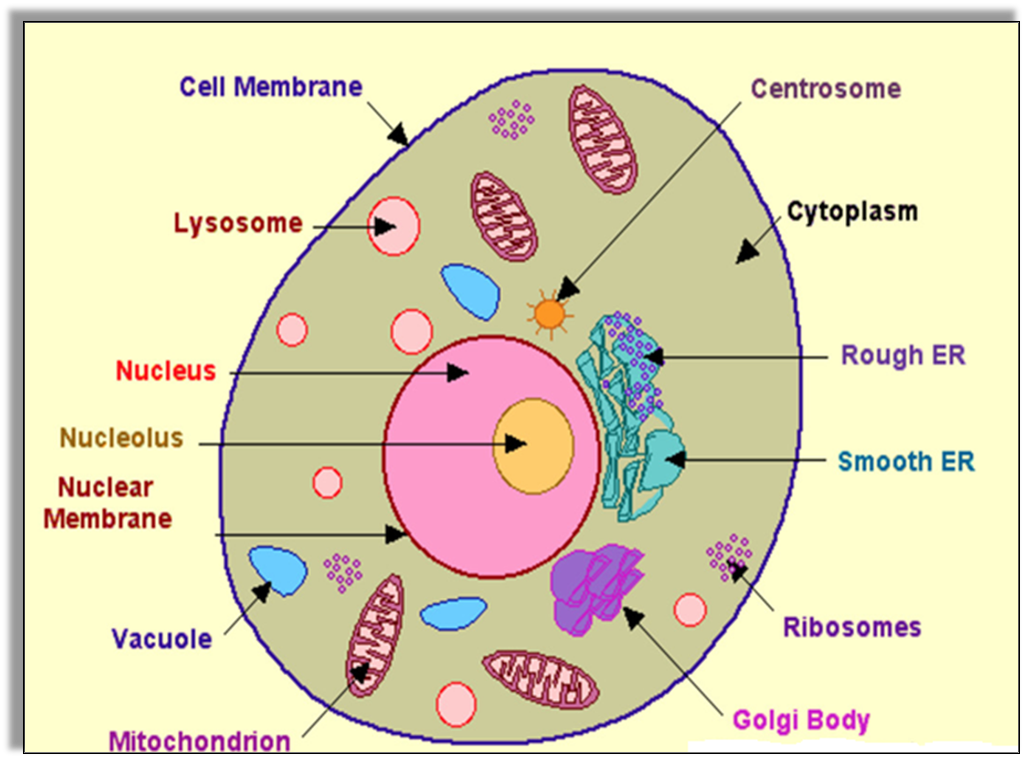
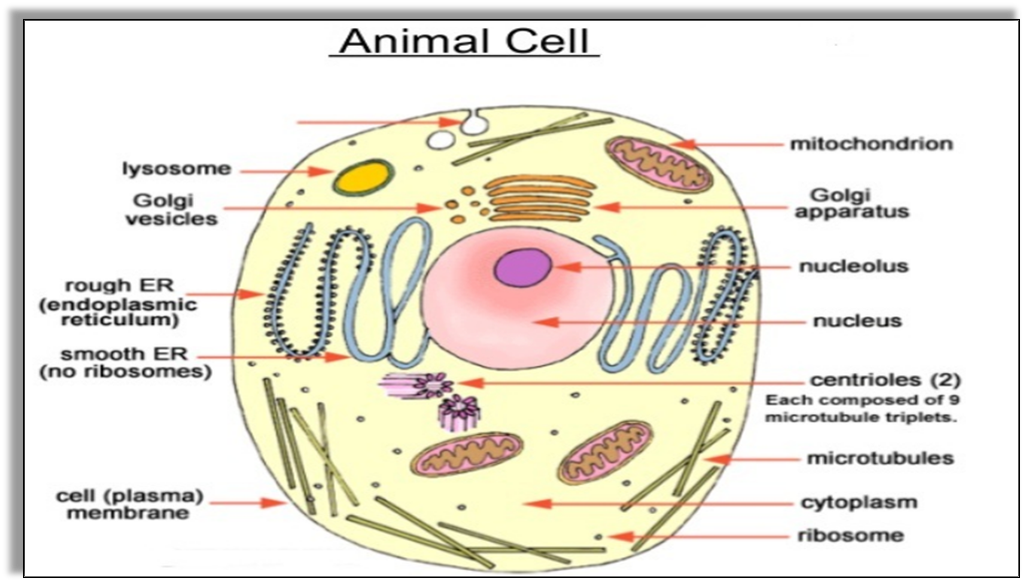
Here are some other differences in plant and animal cells that you need to know:
Plants have larger vacuoles while animals have smaller vacuoles. Vacuoles store water or food for plants and even store waste products until they can be discarded. Plants need bigger vacuoles as they cannot move to satisfy their hunger or thirst.
Only plant cells have Plastids. They help in manufacturing or storing food.
Only animal cells have Centrioles. Centrioles help in the division of cells.
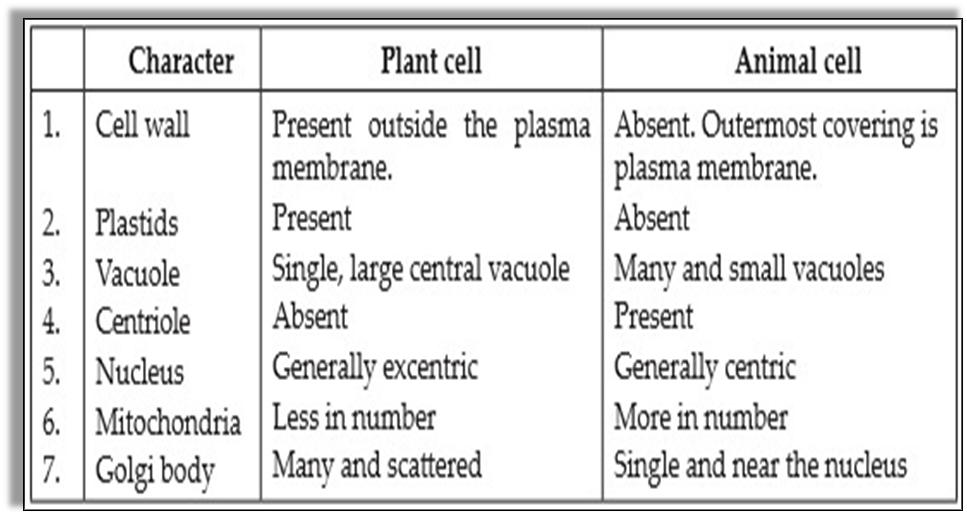

 PathSet Publications
PathSet Publications
